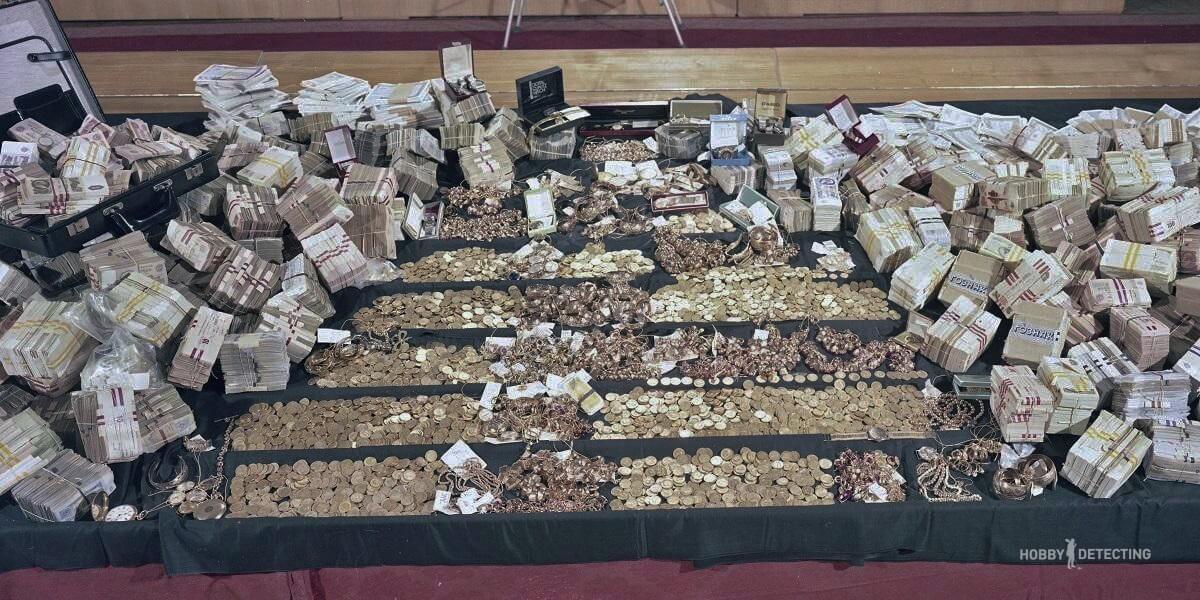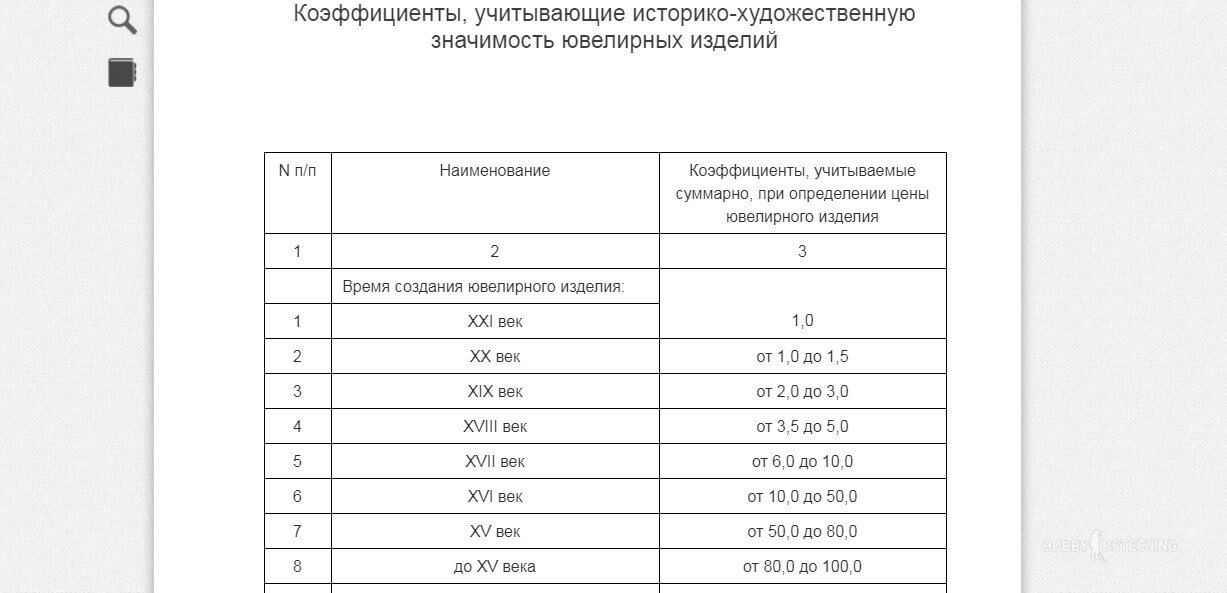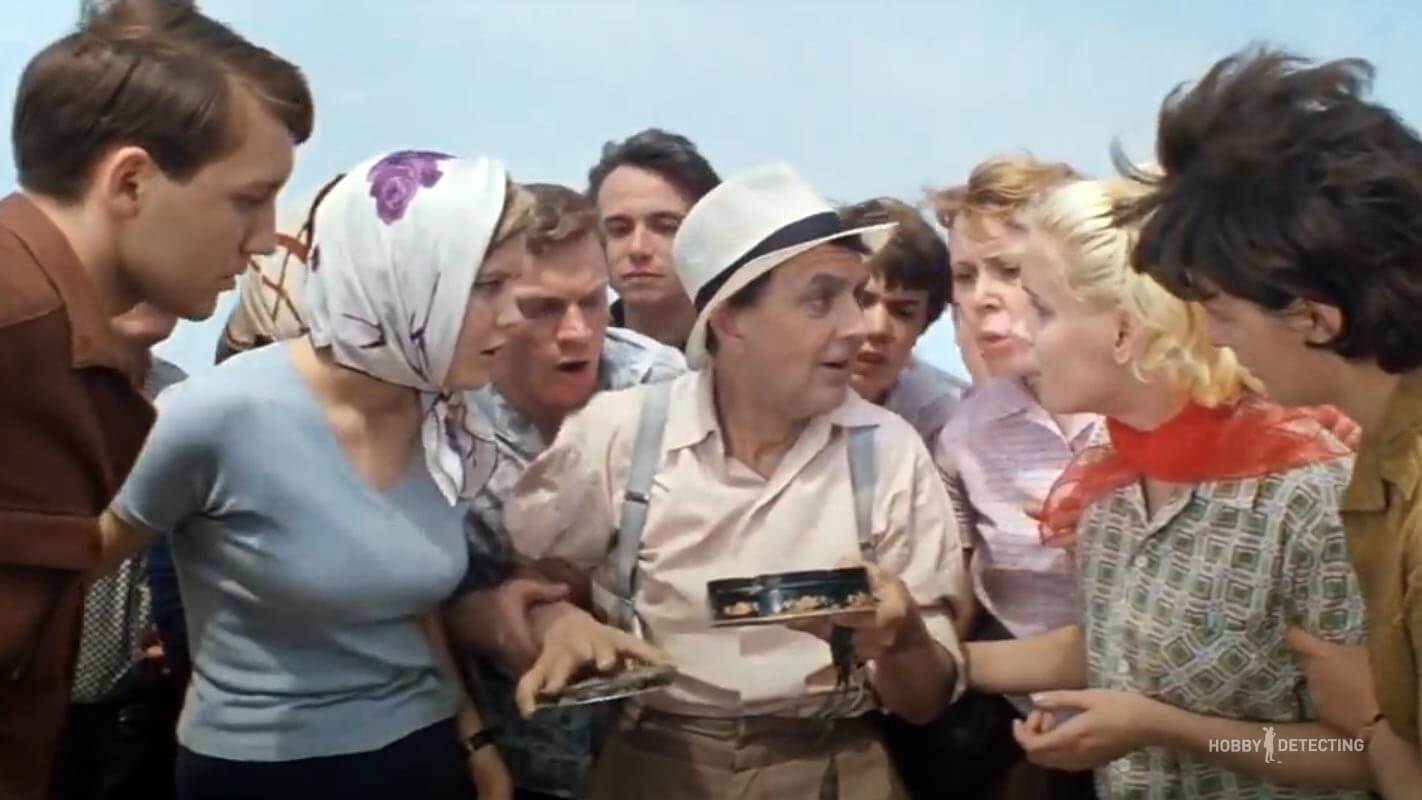How in the USSR Gokhran accepted treasures from the population
Good mood to you, dear readers of our blog.
Since our blog is about stories about treasures and treasure hunters, in the comments and discussions of the notes we publish, you can often see comparisons like “Oh, there wasn’t such a mess in the USSR.” In general, typical arguments are that before the sun was brighter, sugar was sweeter, and workers were given apartments for free. The topic is eternal, as old as the world, and therefore I propose to understand a little how in the USSR the state actually accepted treasures and other randomly found objects made of precious metals and stones from the population.
I am convinced that everyone who experienced the Soviet system at a conscious age has probably heard at least once about the 25% reward established by law for everyone who found and voluntarily handed over treasure to the state. But few people know that in the USSR, a criminal article was applied for concealing and concealing a treasure and (or) attempting to independently sell precious items from a treasure – theft of socialist property. And, in this case, the citizen who hid the treasure could receive from 2 years of criminal imprisonment to capital punishment – execution.
The severity of the punishment depended on the value of the hidden treasure. Until 1991, the following system for determining the amount of damage was in effect. Theft of up to 50 rubles is a minor offense, punishable by up to 2 years of criminal punishment. But, more often than not, it was dealt with by public censure or a suspended sentence. Theft in the amount of 2.5 to 10 thousand rubles was considered a large amount and was punishable exclusively by criminal sentences from 2 to 8 years of criminal term. Theft over 10 thousand rubles is already a particularly large amount and in this case the criminal punishment is up to 15 years in prison, or if a great public danger of the crime is identified, the death penalty is applied – execution.

Gold and money seized during the famous «Cotton Case» As the media of that period claimed — this is only 5% of the total volume of seized valuables. Gold and jewelry were handed over to Gokhran
By the way.This system of determining the degree of danger of an identified crime has given rise to simply colossal corruption in investigative agencies and the police. The fact is that during a search of a corrupt official, a bribe-taker or the director of a vegetable warehouse, the investigation revealed property worth no more than 2.5 thousand rubles. Everything else – gold items, fur coats, money, antiques, crystal and other valuables, the indication of which in the search report could exceed the amount of 2.5 thousand rubles, was taken by the police officers themselves and divided among themselves. As we understand, the owner of the property was only glad of this coincidence of circumstances since he could count on a suspended sentence.
But, let’s return to the topic of treasures. It is unknown whether any of the citizens of the USSR received capital punishment for concealing treasure, but the fact that people went to places not so distant for long periods of time, such cases happened and were regularly written about in the newspapers. So, the motivation to voluntarily hand over the found treasures to the state was clear. In addition, you need to understand that at that time there were much fewer opportunities to freely sell storage coins than today. There was a black market for numismatics in the USSR, but it was a closed system.
This and a number of other factors related to state control over the circulation of precious metals led to the fact that the USSR Gokhran annually accepted from the population, on average, 100 treasures per year. Thus, in the period from 1977 to 1989, Gokhran received 40–50 kilograms of gold coins alone annually from treasures discovered by citizens.
Why exactly Gokhran, the 25% reward and what does the “Decree on Earth” have to do with it???Let’s go into the wilds of history and remember that the first Decree on treasures (Valuable luggage) was signed by the Empress Catherine II the Great at the end of the 18th century. According to that Decree, the treasures found in the ground completely belonged to the owner of the land plot. If the treasure was found on the sovereign’s lands, then the local authorities were obliged to make every effort and show zeal to preserve the treasure, and subsequently transfer it to the Commissioner for Special Assignments of the Ministry of Internal Affairs of the Russian Empire, with the subsequent delivery of the treasure to the Kremlin Armory. At the same time, the Commissioner for Special Assignments determined the amount of monetary reward for the deposited treasure.
For example, the famous treasure of Ryazan barmas, found in 1822 by the serf Efim Ustinov, was kept in the office of the Ryazan governor for two years. Then, the treasure was taken to Moscow, and Efim Ustinov received a cash prize of 8,000 rubles. With this money, the serf bought himself from the master for 200 rubles, built himself a stone house and a mill.

Part of the jewelry from the treasure «Ryazan barmas& #187;
November 8, 1917, the second All-Russian Congress of the Council of Workers’ and Soldiers’ Deputies adopted the “Decree on the Earth”. In essence and briefly, then, on the basis of this Decree, all lands where Soviet power was established became “property belonging from now on to all the people”. With the exception of the land of ordinary Cossacks and peasants. It is for this reason, based on the logic of that very law on treasures, that all treasures found on people’s lands belonged to the entire people and had to be handed over to the Gokhran.
Why exactly Gokhran? Here we must understand the logic and theoretical fabrications of the leading Bolsheviks of that time, including Lenin. And in theory it was assumed that the future socialist society would live without using money or other luxuries at all. Therefore, gold, silver, precious stones and antiques — These are things alien to the people, and they should only be used for trade with capitalist countries. In general, this is a topic for a separate note, and we will move on again to the treasures.
It is quite expected that such a position of the state towards citizens who accidentally or not entirely accidentally found a treasure led to the fact that treasures generally stopped registering or somehow advertising their discovery. If at the beginning of the 20th century the Provincial Registration Commissions of the Republic of Ingushetia annually registered up to 150 treasures, then after 1917, the number of declared treasures dropped to 2-3 per year. As a rule, these treasures were found by citizens in front of a large crowd of people. For example, pioneers planted trees in the park and while digging holes, a treasure trove of 16th-century Swedish silver coins was discovered.
The legislative situation changed in the 60s of the last century. Then, under Khrushchev, almost all legislation was rewritten. In particular, the definition of treasure was introduced and the fact that for the delivery of treasure there is a monetary reward in the amount of 25% of the value of the treasure.
By the way,Few people now will be able to understand what the secret meaning of finding the treasure was at the very beginning of the film “The Diamond Arm.” Remember, in the story, citizens are planting trees, and then one frail pensioner suddenly finds a box of candy. He opens the box in front of a large crowd of witnesses, and there he discovers gold ducats. The whole point of this plot is in the box of lollipops. According to the law, in the USSR treasure was considered to be money or valuable items hidden before 1917. Money or valuable items lost after 1917 were considered a find. And, if the police could not establish the owner of these valuables, then the citizen who found these valuables became the full copyright holder. That is why the film shows a jar of “modern” sweets. In those years, this was a popular form of attempt to legalize criminal, unearned income.
That very moment )))
How the donated treasures were valued and who paid?According to the law, citizens of the USSR, upon discovery of a treasure, had to hand it over to the police at their place of residence on the same day. If the treasure was handed over later and there were witnesses to this, then the citizen could receive a criminal charge. The treasure was described, sealed and transferred for safekeeping to a branch of the state bank. Then, the treasure was sent by special transport to Moscow for delivery to Gokhran. There, according to the expert assessment methodology approved by law, the incoming treasure was assessed. Upon assessment, Gokhran sent a payment order (advice note) to the State Bank at the citizen’s place of residence to pay a certain amount to the citizen.
All the stories about how in the USSR citizens handed over treasures, and then for years could not receive the money they were entitled to, are associated with violations in this chain. Either the treasure simply did not reach the state bank, no one wanted to investigate it, or the money for the treasure was stolen by employees of the state bank and no one wanted to investigate it either.

Gokhran experts evaluate items before sending them to a foreign auction in 1993 (Photo: Sputnik agencies)
The amount of monetary reward was estimated based on the value of the precious metal and (or) precious stones in the jewelry. At the same time, there was a table of increasing coefficients for the value of a coin or jewelry. For example, a 16th-century product was valued as the price of the metal multiplied by 10 or 50. A questionable set of coefficients and, at the same time, generally not reflecting the real cost of the items. So today, Peter the Great’s silver ruble at an auction can be sold for a million rubles or more, while by weight of the metal it will cost (60 rubles per gram * ruble weight 23.3 grams * increasing factor 50 = approximately 69,000 rubles) The difference is obvious, for example, average market price ruble 1714 FIVE MILLION rubles.

No comments here
This system for assessing the value of treasures is still in effect in Gokhran today, and the legislation itself has changed little; at best, a treasure hunter can receive only 25% of the value of the treasure. Exactly the cost that Gokhran will calculate. The only hope is that Gokhran specialists may recognize the treasure as having no cultural or historical value. However, for thirty years there is not a single example of how in modern Russia a citizen who handed over a treasure received money. This is because since 1991, Gokhran has not received not a single treasure!!! Whereas, I would like to remind you that until 1990, Gokhran received up to hundreds of treasures annually.
We will discuss the topic of why treasures in modern Russia do not reach Gokhran in one of the following notes. Including, I will tell the real story of that same missing treasure from Kursk. Subscribe to our channel, like the note and write your comments. We will discuss the most interesting of them.

